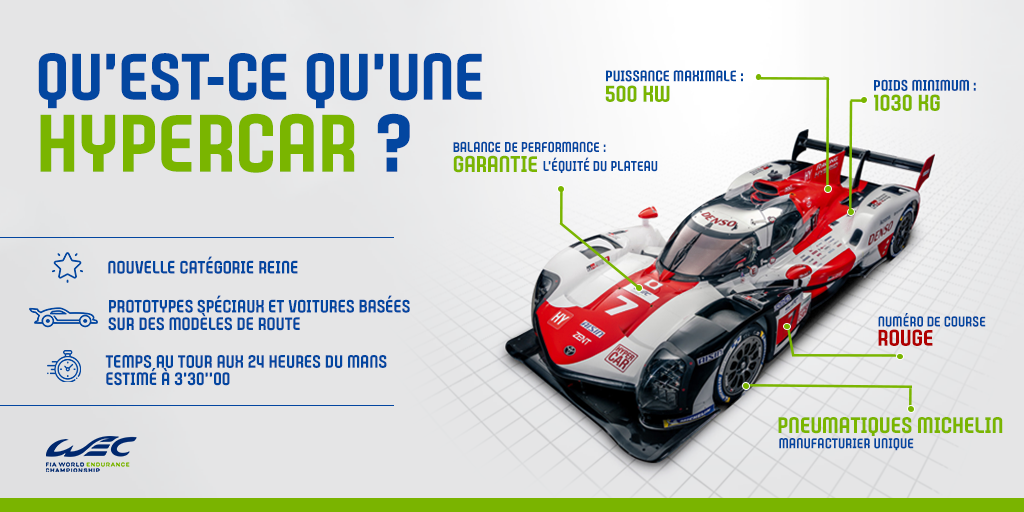HYPERCAR
Introduced in 2021 to replace the LMP1 category, the Hypercar category is the premier category of the FIA World Endurance Championship.
It is open to both prototypes and cars from road series. The cars have a total combined power (engine + hybrid system where applicable) of 500 kW and a minimum weight of 1030 kg.
This category includes two types of cars:
- LMH (Le Mans Hypercar)
- LMDh (Le Mans Daytona h)
The objective of this regulation is to encourage the convergence of these two types of cars between these 2 Championships, the FIA World Endurance Championship and the IMSA WeatherTech SportsCar Championship, allowing participation in the 24 Hours of Le Mans and the Rolex 24 Hours of Daytona.
The Hypercar regulations pave the way for a wide variety of possible architectures, including the use of a hybrid system at the front or rear of the car.
All cars entered in the Hypercar category will be fitted with Michelin tires (exclusive manufacturer). The budget required to run two cars throughout an FIA WEC season will be at least 60% lower than that of LMP1 hybrid programs.
In LMDh, the backbone of the car - that is, the entire car minus the internal combustion engine and hybrid system - will be supplied by one of four chassis manufacturers: Dallara, Ligier, Multimatic or Oreca.
This chassis structure will share a large number of components with the next generation of LMP2. The hybrid system common to the rear axle including the gearbox is mandatory. The system is jointly supplied by Bosch, Williams Advanced Engineering and X-Trac.

FEATURES
Minimum weight: 1030 kg
Performance Balance: BoP adjustments as provided for in the Technical Regulations and by specific decisions of the WEC Committee.
Maximum power: 500 kW
Race number display: pantone rouge 653
Sole tire manufacturer: Michelin
Cost control: reduced budget
Lap time at Le Mans: race average estimated at 3:30.00
LMGT3
The new GT class will be based on the existing GT3 FIA technical platform and will focus on gentlemen drivers and privateer teams. LMGT3 will replace the LMGTE that has been present in the FIA WEC since the inaugural season in 2012. The cars will feature several WEC-specific adaptations, such as luminescent numbers on the doors, as well as position lights.


